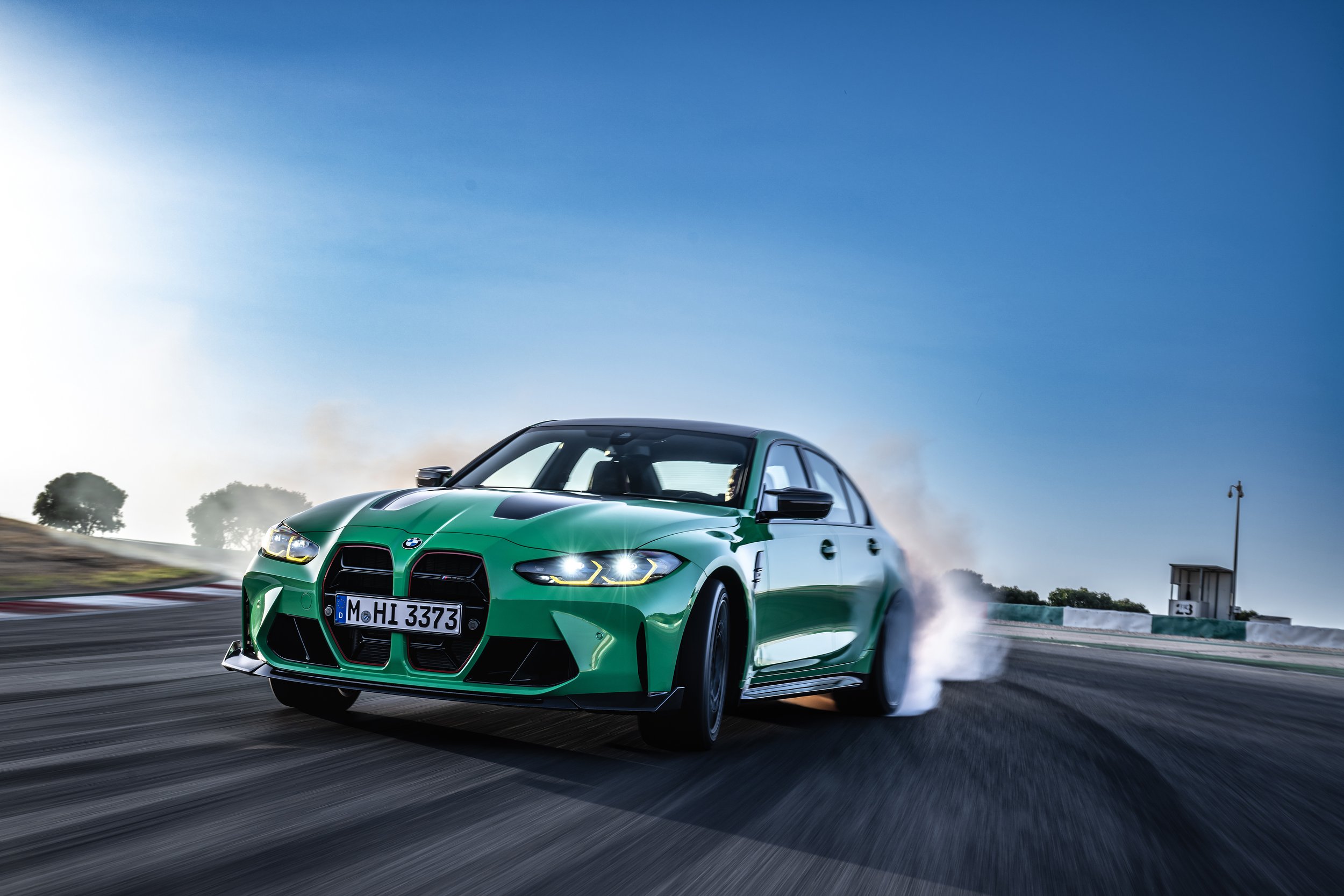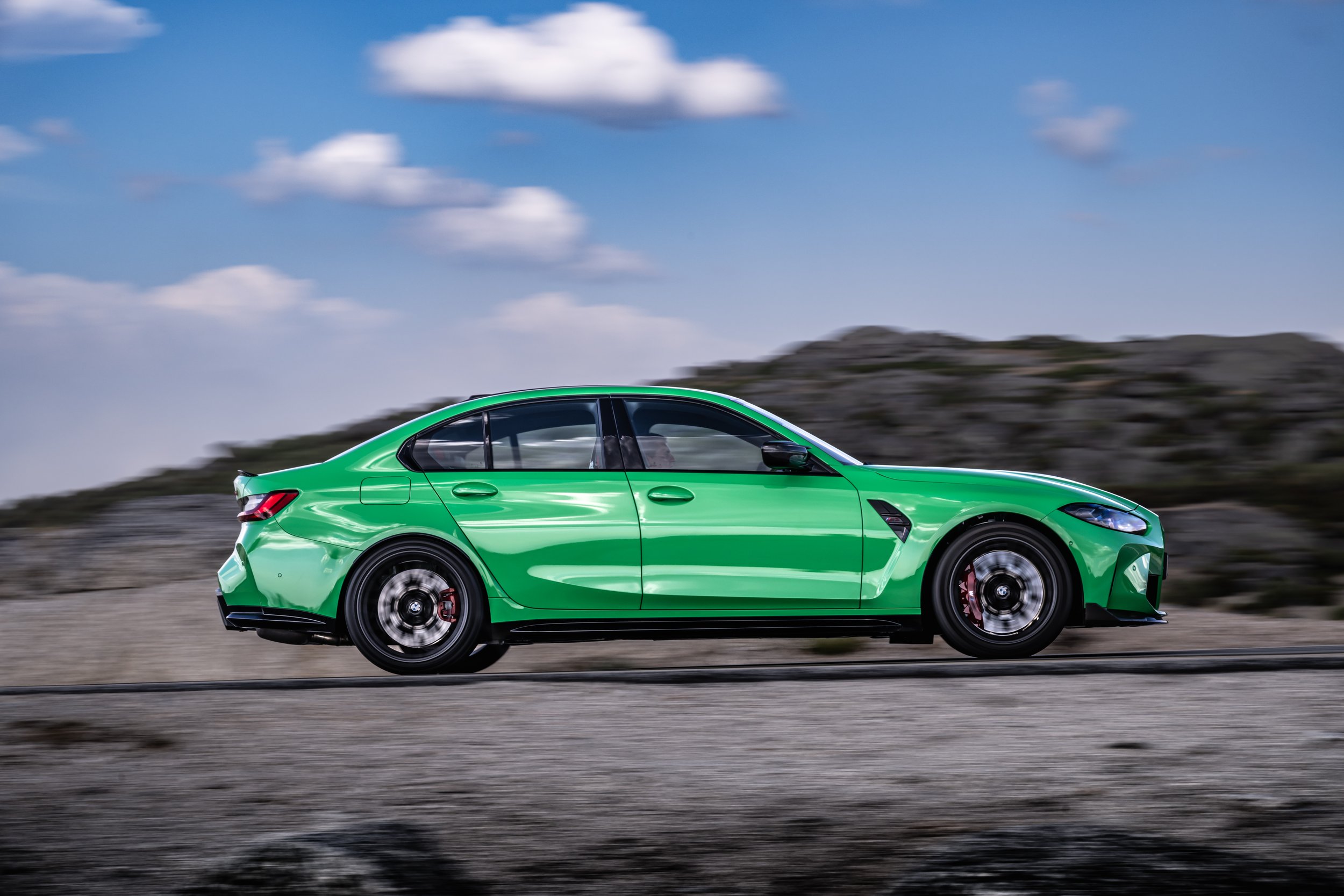M3 CS set to be a rare sight
/Plenty of power, loads of carbon fibre, a ton of street cred … and big money for Munich’s latest hotshot.
CALLING it ‘the one’ might be relevant to more than just status in respect to the national supply count for an ultra-edition BMW M3 assumed to be coming.
A week after many details were leaked, Munich has given out full information about the CS - shorthand for ‘Competition Sport’ - an especially expressive track-fettled limited count four seat four-wheel-drive choice that’s expected to be the most expensive edition of the current line.
A governed top speed of 302kmh also places it above the most muscled of the main M3 sports sedans, the M3 and M3 Competition, and also the M3 CSL coupe. Zero to 100kmh in 3.4 seconds and to 200kmh in only 11.1s is also claimed.
The car is set to makes it first public appearance at the Daytona Speed Week festival this weekend, when BMW’s next generation of sports racers also make their track debut.
Production begins in Germany in March and the build run will be limited, the final count yet to be shared.
How many for New Zealand? Assumption is that the high interest in M product – per head of population, our roll call is world leading – will be enough to get this country on the VIP list.
That question, plus one about how much this bauble will cost (Australia’s paying the equivalent of $274,000, which bumps a further $18k if the highest level of performance brakes is included) has been put to BMW New Zealand, via its public relations’ firm, Pead.
No answer yet – the story will be updated when it comes – but past special edition performance cars have only arrived in single figure count. The previous (and first) M3 CS, which came out five years ago, was a singular provision here.
Power output from the latest car’s 3.0-litre twin turbo six cylinder has been boosted to 405kW – that’s 52kW more than BMW achieves from the standard M3 and 30kW above the Competition’s output.
Maximum torque remains unchanged from the M3 Competition at 650Nm, generating from 2750rpm all the way through to 5950rpm; 300rpm short of the power peak. The limiter is at 7200rpm.
The engine 3D-printed cylinder-head cores to improve temperature management, a trick picked up from its DTM programme, and maximum turbo boost pressure has been raised from 1.7 to 2.1 bar. The elaborate engine bay brace atop the powerplant is for dynamic enhancement - but it’ll obviously have wow-worthy status in its look, alone.
Excess exhaust pressure is sent through a pair of branched exhausts, with electronically operated control flaps, a titanium rear silencer and two pairs of matte-black tailpipes exiting beneath the rear bumper.
The M3 CS still uses an eight-speed ZF-sourced automatic transmission that operates automatically, via the sequential shift lever or through the steering wheel-mounted carbon-fibre paddles.
The oil supply for the multi-plate centre clutch has been adjusted for more consistent track performance, while the active locking rear differential is unchanged.
The M3 CS defaults to its all-wheel drive system, but can be driven with a rear-biased all-wheel drive set-up or, with the Dynamic Stability Control disengaged, as a rear-drive sports sedan.
The types runs 275/35 ZR19 front Michelin tyres and 285/30 ZR20 rears; that’s larger rubber than the M3 and M3 Competition, and though those cars’ active damping retains, it has been heavily retuned on the presumption of more track work.
It also has a different anti-roll bar, retuned springs and more negative wheel camber, while the electromechanical steering has also been retuned for the fatter tyres.
The type achieves with long-range laser headlights as standard equipment; these (and the DRLs) gives a nod to M’s motorsport origins by illuminating in yellow, rather than white, when the car starts up.
The green (with envy?) paintwork of the car here is called Signal Green. Other colour choices are a Frozen Solid White, Brooklyn Grey metallic and Sapphire Black metallic.
The stock brake calliper colours are either red or black, but the optional carbon-ceramic brake package can be had in either red or matte-gold.
The roof, parts of the bonnet, the front air intakes, front splitter, mirror caps and rear spoiler are all in exposed carbon-fibre.
The stand-out interior amendment is a pair of unique two-piece, carbon-compound bucket seats, which are heated, heavily bolstered for track work and have an integrated head restraint.
A standard red-and-black colour scheme for the merino leather trim extends to the rear, where the doors trimmed in black leather.
The M3 CS not only comes with all the features of its siblings, like the lap timer and drift analyser, but adds 10-stage traction control.
The M3’s curved display screen continues to house a 14.9-inch instrument cluster and 12.3-inch multimedia screens behind a single curved screen.
Standard equipment runs to two-zone climate control, Harmon Kardon surround sound and auto braking and lane keeping.






















